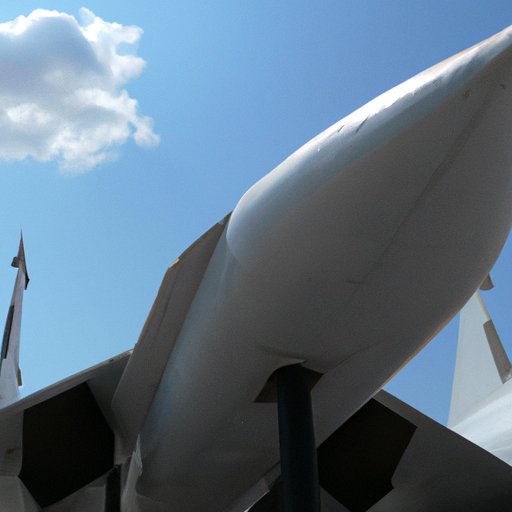Introduction
Flight has been a dream of humans since antiquity. It is the ability to move through the air with the aid of an engine or other form of power, such as wind or thermal currents. The invention of flight has revolutionized the world, allowing us to travel vast distances in short amounts of time, explore new frontiers, and open up opportunities that were once thought impossible. But when was flying invented?

Exploring the Pioneers Who Developed Early Aircraft
The history of flight dates back to the 18th century, when the first experiments with hot air balloons were conducted. However, it wasn’t until the 19th century that the first powered aircrafts began to take shape. One of the most notable pioneers of early aircrafts were the Wright brothers, Wilbur and Orville. On December 17, 1903, they conducted the first successful powered flight in a heavier-than-air machine, the Wright Flyer. This marked a major milestone in the development of flight and opened up a new era of human exploration.
In addition to the Wright brothers, there were other pioneers of early aircrafts who made significant contributions to the development of flight technology. Otto Lilienthal was a German aviator who designed and built gliders in the late 19th century. He was one of the first to study the principles of aerodynamics and make controlled flights in a heavier-than-air machine. Also, the Montgolfier brothers were two French inventors who constructed the first hot air balloon in 1783. Their invention provided a crucial foundation for the development of modern aircrafts.
Examining the Evolution of Flight Technology
Early aircrafts were fragile machines with limited range and capabilities. Over time, however, the technology behind aircrafts has evolved significantly. The introduction of military aviation during World War I marked a major turning point in the development of flight. Military forces on both sides of the conflict invested heavily in the advancement of aircrafts, resulting in faster, more maneuverable designs.
After the war, civilian aircrafts began to incorporate many of the same technologies used by the military. Airframes became more reliable and powerful, while engines grew more efficient. As a result, aircrafts could fly longer distances and reach higher altitudes. The development of jet engines also had a major impact on aircrafts, allowing them to reach speeds that were previously thought impossible.
How Has Flying Changed Over Time?
Since the invention of flight, aircrafts have become faster, more efficient, and more capable. Today, modern aircrafts are capable of reaching speeds of up to Mach 5 and can fly non-stop around the world. They can also climb to altitudes of over 50,000 feet, allowing passengers to experience breathtaking views of the Earth below.
Advances in technology have also improved the safety and comfort of passengers. Modern aircrafts are equipped with sophisticated navigation systems, advanced weather radar, and autopilot capabilities. Additionally, passenger cabins are now equipped with amenities such as Wi-Fi and entertainment systems.
The Future of Flight: Where Will It Take Us?
As we look ahead to the future of flight, there are many possibilities that could revolutionize the way we travel. Alternative propulsion systems, such as electric and hydrogen fuel cells, could dramatically reduce emissions and improve efficiency. Autonomous airplanes and drones could be used to deliver goods and services, while hypersonic aircrafts could allow travelers to cross continents in a matter of hours.
These advancements could open up entirely new markets and opportunities for businesses, governments, and individuals. For example, long-distance air travel could become much more affordable and accessible, allowing people to explore the world with ease. Additionally, advances in drone technology could open up new avenues for package delivery and emergency response.
Conclusion
The invention of flight has changed the world forever. From the early experiments of the Montgolfier brothers to the modern aircrafts of today, the development of flight has allowed us to explore new frontiers and open up opportunities that were once thought impossible. Looking ahead to the future, there are many possibilities that could revolutionize the way we travel, allowing us to go further, faster, and more efficiently than ever before.
(Note: Is this article not meeting your expectations? Do you have knowledge or insights to share? Unlock new opportunities and expand your reach by joining our authors team. Click Registration to join us and share your expertise with our readers.)
